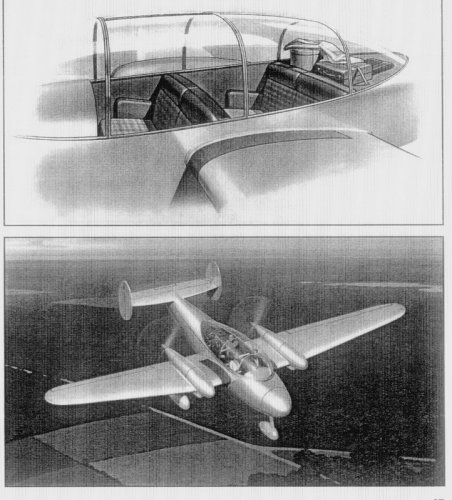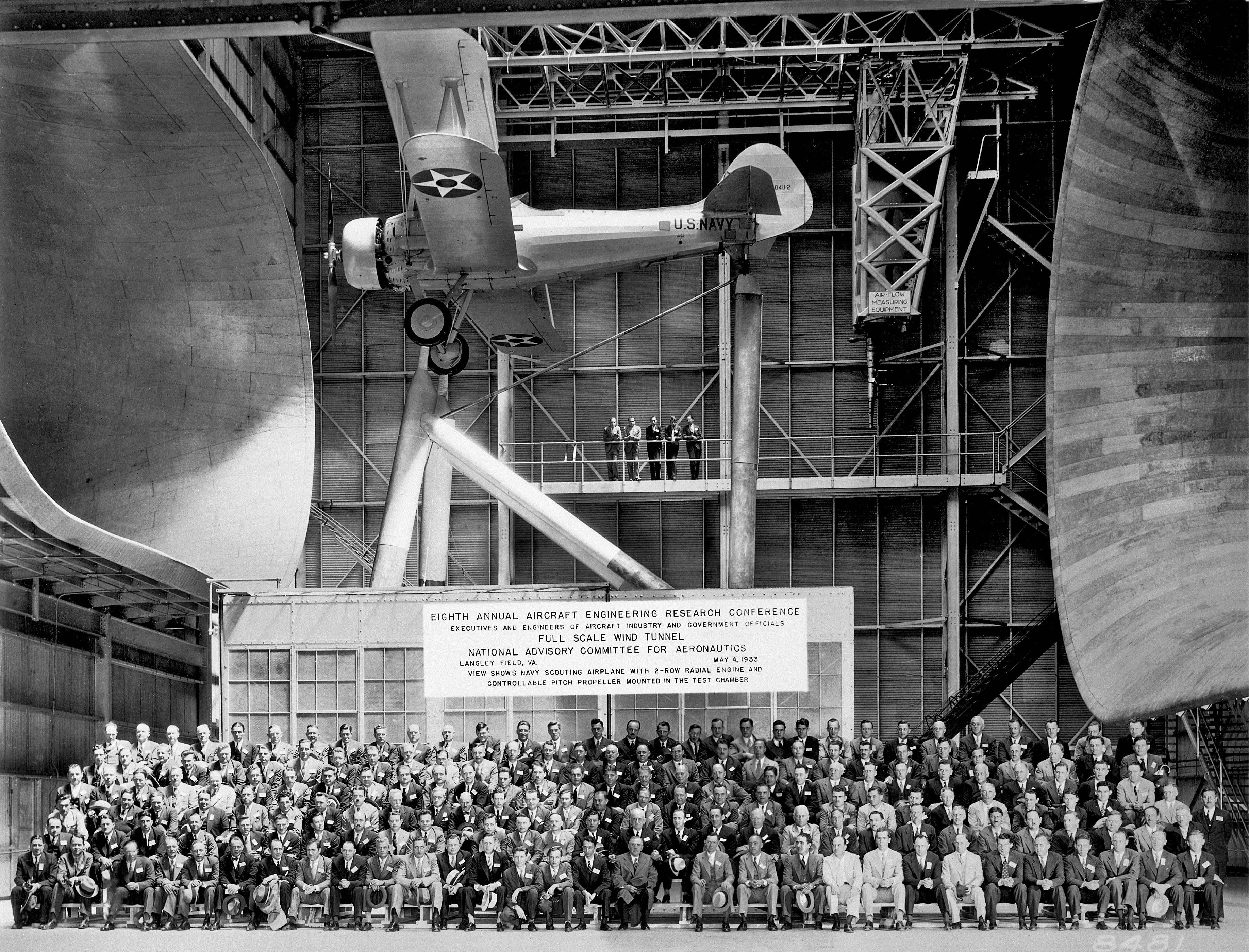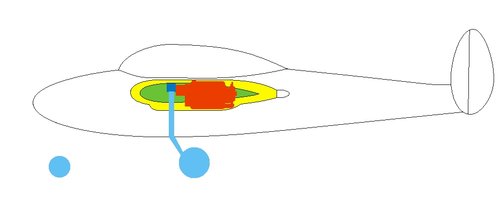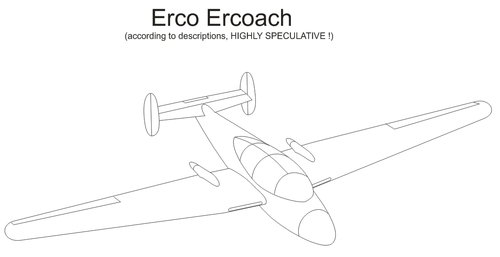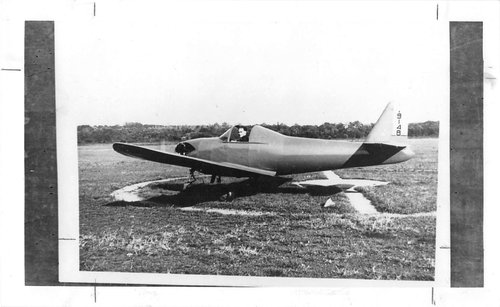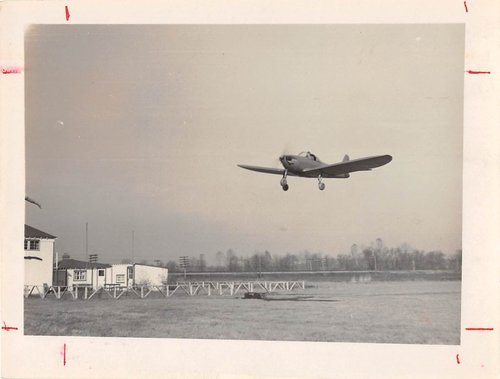TAPE 14 (Side 1)
1947 - Sanders Takes Ercoupe; Erco Experiments
In the spring of 1941 well before this country got into World War II, I was making some computations regarding a twin-engine airplane that would have at least some of the characteristics of the Ercoupe. During the summer and fall of 1941 I had some help from a couple of my young engineers at Erco, but of course when December 7 came along, this work all stopped. It looked at the time that this entire venture would have to be put off until after the close of the war, but an interesting situation developed.
[...] By the end of the war, the preliminary design work had been completed, a complete wooden mock-up of the fuselage area and other parts, landing gear and so forth, had been made and the detailed design was pretty well along.
[...] The design had some unique features and I believe that it would not only have been the first light twin to be produced after the war, but would have performance and flight characteristics that would have been hard to beat for a while. It was designed to have two engines of at least 150 or 160 hp each, but these were not available in a light form at that time. There were two different 125 hp engine models available then, both of which would be boosted to powers from 145 to 160 later. And this was what we were counting on. One of these was a 4-cylinder Lycoming engine and the other was a 6-cylinder Continental. In order for these to have the plane fly satisfactorily with at least four people on one of the 125 hp engines, I gave the airplane a large span, 45', and we tried to make it as sleek as possible, as close as possible to a glider or sailplane in form. It had a tapered wing which was thick enough in the center to house either of the engines completely, since they could be furnished with fuel injection systems and would not have carburetors hanging down below. With the oil not housed in a sump below but in a separate tank, the vertical dimension of the engine could be made very shallow and the engine could be made to fit completely within the contour of the wing itself. One of the then new NACA low-drag, so-called laminar-flow airfoils was used which had the thickest part of the wing near the center of the chord. With the fully retractable gear, then, this would make a very clean twin engine airplane. The center panel of the wing including the engines was straight, but from the engines out the wing was tapered in such a way that the planform gave very nearly an eliptical loading for the wing and airplane as a whole. With the 45' span, it should therefore have a very low induced drag and be able to do reasonably well, even with just one 125 hp engine operating. The general configuration of the plane was a little more like the W-1 than the Ercoupe, in that it had a high wing and used pusher propellers. The tail surfaces were very similar to either the W-1 or the Ercoupe, with horizontal surface between two vertical ones.
In this case the horizontal surface was supported on the fuselage like that of the Ercoupe, and it had two vertical tails, like that of either one. In this case the vertical tails were directly behind the propellers, so that by setting the fin at a slight angle deflecting the fin a slight amount, we could get a certain amount of correction against the yawing tendency of a single engine, when a single engine was in use. With this arrangement, it would have been relatively easy to get approximately the same trim airspeed for a given control wheel position regardless of whether the power was on or the power was off, and throughout the entire speed range. This helped the ease with which one can obtain a single limitation to the elevator movement to serve with the power-on and power-off condition. In the front, there were two individual seats for the pilot and co-pilot, but the rear bench seat was as wide as that in a car of that day, so that it could seat three people if desired. The airplane could therefore be considered either a 4-passenger or a 5-passenger airplane.
Although this was a high-wing plane, as far as the wing-fuselage combination was concerned, the wing was no higher than it needed to be to give propeller clearance. And so it might be better to call it a low fuselage plane rather than a high wing. With the twin-engine pusher arrangement, we could run the nose of the fuselage as far forward as we desired and have a good structural support for the nose wheel, even with a good, long wheel base for the landing gear. Furthermore, I designed a gear supporting the nose wheel in such a way that it moved up and backward as the load was supplied to it, and it continued to move up and backward as it retracted into the fuselage. The wheel would in effect be dragged over obstacles by its landing gear support in about the same way that the rear wheel of an Ercoupe gets dragged over obstacles, and I hoped that this would relieve much of the punishment that a nose wheel has to take, particularly when it is supported from the rear, as it has to be in a single-engine tractor airplane.
When World War II ended, the Aircraft Development Corporation was dropped and the activity moved into Erco itself. The new design had two features that needed extra development. One of these was the cooling of the pusher air-cooled engine entirely submerged within the wing. The other was the development of a suitable extension shaft arrangement because the propellers were located about 2 1/2' back of the engines .. to give reasonable clearance from the wing. We made cooling tests, both at Erco and on a dynamometer at the Lycoming plant. I used exhaust ejector pumps for pumping the cooling air through the engine baffling and used inlets in the leading edge of the wing in front of each row of cylinders, as had been worked out by the NACA. We finally attained satisfactory cooling at full throttle on the ground, but the baffles that we had installed cracked and did not last very long. Because of the pulsations that were in the cooling air as it was pulled through by the exhaust ejector cooling pumps, we could not use any flat surfaces in the baffling without vibration and failure, and this problem still needed development but was certainly one that could have been worked out satisfactorily. Ground runs were made with the extension shafts also, but this was not worked out completely satisfactorily at the time the work stopped because of the general stoppage of the light airplane work at Erco.
We called this twin-engine job the Ercoach, and not being able to complete the project and see it in actual use has been one of my greatest disappointments.

